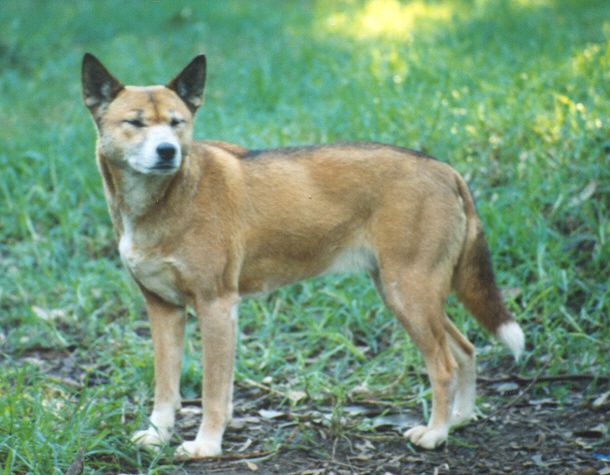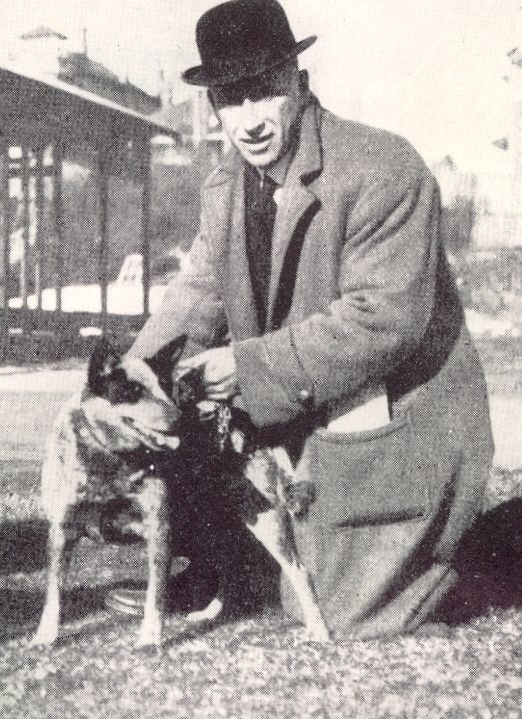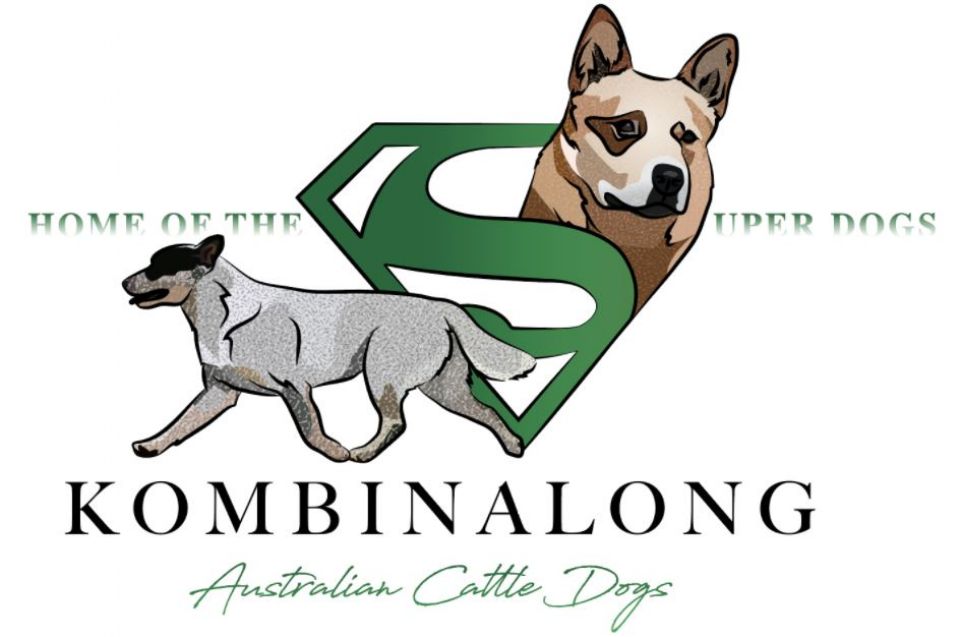History of the breed

The Origins of the Australian Cattle Dog and the Australian Stumpy-tail Cattle Dog
George Hall, a Northumbrian free-settler, embarked on a journey to New South Wales with his wife Mary and their four young children in 1802. Their goal was to establish a thriving beef cattle empire in the region. Over time, their family grew to include six sons and three daughters, creating a strong foundation for their future endeavours.
One of George and Mary Hall's sons, Thomas Simpson Hall, was born in the Hawkesbury in 1808. He inherited his father's determination and ambition, and at a young age, he joined his older brothers in exploring the upper Hunter Valley. This area had been scouted by the brothers previously, and they decided to settle there. They successfully established two cattle properties, starting with Dartbrook and later expanding to Gundebri, which were located near present-day Aberdeen and Merriwa, respectively. Despite his youth, Thomas gained the respect of his father and brothers, and he took charge of the family's cattle empire from Dartbrook.
With the financial support of his father, Thomas oversaw remarkable growth, eventually accumulating over one million acres of land. Thomas Hall was not satisfied with the quality of cattle in New South Wales, so he took it upon himself to improve the breed. He dedicated himself to managing the breeding programs for all the family properties from Dartbrook. His main focus was developing a hornless variety of cattle, known as polled cattle. This became his passion project.
Additionally, Thomas recognized the shortcomings of the Smithfield breed as a long-distance drover's dog. To address this, he decided to create a new type of working dog using the dingo as a foundation. He raised his dingoes alongside other dogs until they reached sexual maturity, at which point he would securely kennel them with domestic dogs of the same sex to prevent them from returning to the wild. Despite the challenges, Thomas Hall was determined to find the perfect working dog for his cattle empire. Fortunately, he had connections and knew where to look. It was his family involved in Durham cattle beef farming in Northumbria who provided him with the ideal solution. The Durham cattle farming community delivered the right working dogs that Thomas needed to enhance his operations. With these dogs, he could effectively manage his cattle and ensure the success of his family's empire in New South Wales.
Robbie Hall, the Hall family historian from Northumbria, recently verified that the Hall family had a lineage of blue mottled Curs. This confirmation sheds light on the fact that the Hall family specifically bred and maintained a line of these unique dogs. The blue mottled Curs, also known as speckled Curs, were believed to carry the mottled color gene, which eventually led to the creation of Hall's Cur. These dogs were notably sent to New South Wales in the 1820s along with Thomas Hall's Durham cattle, showcasing the historical significance of this particular breed within the Hall family.
The Cur breed was once prevalent in northern England, particularly in Northumbria. These dogs were highly specialized for droving purposes, aiding in the management of cattle before the advent of railways. Thomas Bewick, a renowned Northumbrian naturalist and engraver, highlighted the importance of Curs in his publication, A General History of Quadrupeds, in 1790. He praised the Cur for its loyalty and usefulness to graziers, emphasizing its role as a valuable servant in the agricultural landscape of the north.
Despite not being officially recognized as a distinct breed, the Cur was widely utilized in the northern regions for herding and managing cattle. The disappearance of this breed coincided with the rise of railways, marking the end of an era for these specialized droving dogs. The historical documentation provided by Robbie Hall and the insights from Thomas Bewick's writings offer a glimpse into the significance of Curs, particularly Hall's Cur, in the agricultural history of Northumbria and beyond.
This particular dog was known for its exceptional strength and resilience. It was a breed that deviated significantly from the traditional herding dogs, such as the Shepherd's Dog, as it was specifically developed for more demanding tasks. Unlike its counterparts, this dog had a smoother and shorter coat, a taller and more square-shaped body, and could come in various colors. Additionally, it had half-pricked ears and was naturally born without a tail. Its primary role was to push and drive livestock.
When it came to their working style, these dogs were incredibly skilled. They possessed a remarkable ability to bite with precision and intensity. Their preferred method of attack was targeting the heels of the cattle, rendering the animals defenseless against their relentless pursuit. In fact, they were more than a match for even the strongest bulls, swiftly forcing them to flee. Moreover, these dogs exhibited exceptional intelligence. They were familiar with their owner's fields and displayed a remarkable attentiveness towards the cattle within them. A well-trained dog would diligently patrol the area, and if any unfamiliar livestock were to appear, it would immediately launch into action, using its sharp bites to drive them away.
Bewick's engraving of the Cur showcased a dog with distinct physical features. It had a short coat and a profile that appeared somewhat square-shaped, complemented by long legs. The dog's tail was naturally bobbed, and it had ears that were partially erect. Its neck was of moderate length, and it possessed a strong, tapering muzzle, along with typical Collie markings. The depicted specimen exuded a sense of purpose and determination, while a Cur in the background was shown skillfully herding a bull. Notably, this dog seemed to possess great speed, as evidenced by its large and well-defined feet. It is not difficult to imagine that a terrier breed, such as the now-extinct English White terrier, could have been present in the mix, contributing to the overall appearance and capabilities of this remarkable dog.
Thomas Hall's creation of the Heeler involved a meticulous process of crossbreeding and selective breeding. By combining the family working Cur with the dingo, he aimed to develop a dog with the necessary physical attributes and working traits. Through back-crossing and selective breeding, he was able to achieve the desired result in a relatively short period of time. However, as with any breeding program, there were likely unsuitable specimens that had to be culled to maintain the quality of the breed.
The offspring of the Cur and dingo union resulted in two distinct types of Heelers. One type had a long tail and a dingo-like appearance, which eventually evolved into the Australian Cattle Dog. The other type had a bobbed tail and a more Cur-like profile, known as the Timmins Biter and later as the Australian Stumpy-tail Cattle Dog. Both types inherited valuable traits from their ancestors, such as intelligence, resourcefulness, work ethic, and protective instincts.
The Hall's Heeler inherited a combination of traits from both the Cur and the dingo, making it a versatile and capable working dog. From the Cur, they gained courage, willingness to please, and a natural suspicion of strangers. From the dingo, they inherited cunning, intelligence, adaptability, and a tireless gait. This unique blend of characteristics made the Hall's Heeler an excellent guardian and worker, providing valuable protection to Hall's settlements and properties in the challenging Australian environment.
Thomas Hall strategically placed his Heelers across his father's vast landholdings, which extended from the northern tablelands to the near-western plains and the New England regions of New South Wales. The Hall family's pastoral empire eventually expanded to Surat in mid-western Queensland. The responsibility of breeding the Heelers was entrusted to the station managers, and both types of Hall's Heelers garnered support from the Hall stockmen.
At the southern end of the extensive beef cattle operations, Thomas Hall showed a preference for the tailed dogs. In contrast, those in northern New South Wales and southern Queensland seemed to favor the stumpy-tailed dogs. The Stumpy, known for its longevity as a drover's dog, was highly regarded by many. The tailed dogs on Hall's southern properties, reminiscent of their Cur ancestors in northern England, were gradually phased out of long-distance droving to Sydney with the advent of rail transport in the upper Hunter Valley in 1872. With the introduction of mass-produced wire and barbed wire fencing, the need for hard-working dogs like Hall's Heelers diminished on fenced and paddocked properties.
The Heelers, known for their dedication to wrangling semi-wild cattle on the extensive eastern droving routes, saw a decline in demand as the livestock management practices evolved. Following Thomas Hall's passing in 1870, the two distinct breeds of Heelers, the tailed southern type, and the stumpy-tailed northern type, took divergent paths towards becoming the breeds we recognize today.
The Australian Cattle Dog, also known as Hall's Heeler, had a significant impact on the cattle industry in Australia. The southern type of Hall's Heeler was specifically bred for the demanding task of controlling wild cattle in rugged terrains. These dogs were not only skilled at keeping a group of cattle together but also excelled at driving stubborn beasts out of dense cover or herding them back to the mob. They were known for their toughness and resilience in the face of challenging circumstances.
However, as progress and technology advanced, the need for these hardworking dogs diminished. The southern variety of Hall's Heeler, also known as the tailed variety, faced the risk of becoming obsolete. Fortunately, the Australian Cattle Dog found a new purpose and gained popularity in Sydney, thanks to the support it received from the show ring community. This ensured the dog's future and prevented it from disappearing altogether.
At the same time, another version of Hall's Heeler, known as the Timmins' Biter, gained popularity in the remote districts of north-west New South Wales and southern Queensland. These areas required a dog that could handle large cattle holdings and long-distance droving in rough terrain. However, with the establishment of railheads and the rise of road stock transport, the demand for such hardworking dogs decreased. Indiscriminate breeding, cross-breeding, and lack of popular patronage further endangered the stumpy-tailed variety of Hall's Heeler, almost leading to its extinction by the late twentieth century. Unlike the Australian Cattle Dog, the Stumpy was not as popular in the show ring.
Despite the challenges faced by both varieties of Hall's Heeler, they remained highly valued in the bush. The average cattle farmer in remote areas prioritized the dogs' workability rather than the length of their tails. Over time, numerous strains of both types of dogs emerged, each with its own unique characteristics. Both the Australian Cattle Dog and the Stumpy enjoyed legendary status for their strong work ethic, loyalty, intelligence, and devotion to their owners and families. They became highly sought-after as excellent family pets, show dogs, and reliable guard dogs. The blue or red speckled coat of these dogs became synonymous with their fiercely protective nature, often biting first and asking questions later.

Contact Details
Kombinalong Kennels
NSW Australia
Email: [email protected]
Phone: 0419787375
ABN 99 209 925 507
